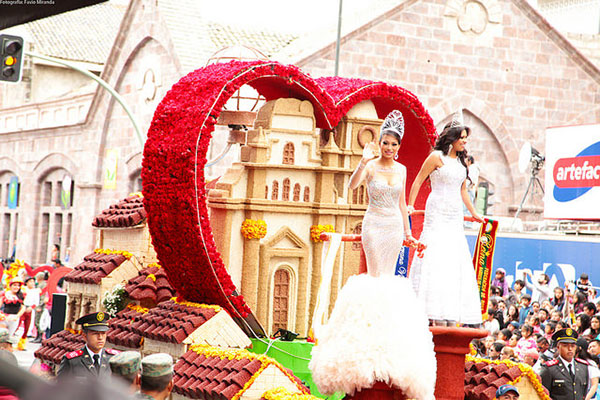- Talk with an expert insider!
- USA & Canada: 1-773-280-9571
- Ecuador: +593-987-004-404
- [email protected]

Ecuador Local Yearly Festivals

Mindo Cloudforest Travel Guide and Tips
November 26, 2018
Weather of the Ecuadorian Highlands
December 11, 2018The spirit of the Ecuadorian people comes out during the festivals and holidays here. People take to the streets in celebration during events in Quito, Cuenca, Latacunga, Ambato, and beyond where dancing, parades, and music bring fun times and insight into the culture. Keep reading for six events to check out when in Ecuador.
Diablada de Pillaro
From the 1st to the 5th of each January the Andean city of Pillaro’s streets fill in a tradition that dates back to the Spanish. Indigenous people of the region dress in colorful costumes with elaborate masks, playing the devil as a way of exercising demons for the coming year. The tradition started as a protest against the Spanish, and has continued to become one of the best festivals in Ecuador. Communities come together, dancing as groups to bands and everyone gets into the act. Men, women, and children of all ages join in the fun, as well as travelers in town for the festivities. Folklore says that if you do dress as the devil and join in, you have to do it seven times or strange things will start to happen in your day to day life.

Fiesta de las Frutas in Ambato
Ambato is often overlooked on itineraries or for festivals in Ecuador. It’s a vibrant place where the last week of February or early days of March sees people and floats take to the streets. The event was started almost 70 years ago, as a way of celebrating the city and its resilient people who survived an earthquake and got back on their feet to rebuild out of the ruins.
It takes place in conjunction with Carnival, and more than 30,000 people flock to the city from all over the province. International dance troupes, artists selling crafts, parades, and music are highlights that make it a sight worth experiencing first hand.
Eastern Holy Week in Quito
By and large, most of the people in Ecuador are Catholic-a reminder of the Spanish occupation. Holy week, Good Friday, and Easter in Quito bring out a different set of events, including a parade on Good Friday where thousands march in solemn piety. Dressed in purple costumes where seas of color are matched my people bearing crosses, crowned by barbed wire, and walking barefoot on hot pavement, the procession is a spectacle that puts you at the center of the spiritual culture of the country.

Inti Raymi, Otavalo
The Inti Raymi festival in Ecuador dates back to the Inca and the Canari people before them. It a festival of the sun, where celebrations are part fiestas and part rituals. Indigenous people gather at waterfalls and rivers in purification ceremonies before dancing in the streets following the Aya Uma-or spirit of the mountain. Fruit is brought to give to mother earth, and the whole event takes place as thanks for the harvest and the bounty found during the year.
Mama Negra, Latacunga
Held at the end of September and again at the beginning of November, the Mama Negra Festival is a spectacle that pulls out all the stops. Dancers in colorful costumes and masks, music, and roving tricksters fill the streets. The festival is a mix of tractions and cultures. African, Aymaran, Incan, Mayan and Spanish influences are part of the proceedings. It dates back to 1742, when the nearby Cotopaxi volcano erupted. The town’s residents asked the Virgin de las Mercedes for help and when the city was saved, the festival was founded out of gratitude.
During the Spanish occupation, they brought slaves from Africa to work in the mines around Latacunga. Their influence brought new aspects to the festival, Mama Negra, or the black mother is a central figure who is played by a man and is seen in the parades and ceremonies throughout the day and at the parties that take over at night.

Independence of Cuenca
The first week of November in Cuenca is a time for celebration and remembrance. Day of the Dead is a time when families visit cemeteries, bringing food and drink for their loved ones.
The days that follow are reserved for parades, streets lined with artists and vendors, music, dancing and processions that feature the indigenous cultures and communities of the parishes around town.
Well worth the trip, Cuenca’s heritage is on display with flying colors, as the people celebrate Ecuador’s third largest city’s independence from the Spanish.
For more information about festivals in Ecuador and making them a part of your time and travels here, contact a member of our team. Also, check out our travel guide with the list of all the Ecuador and Galapagos Public Holidays and celebrations for 2019 and plan your holiday to Ecuador accordingly.





